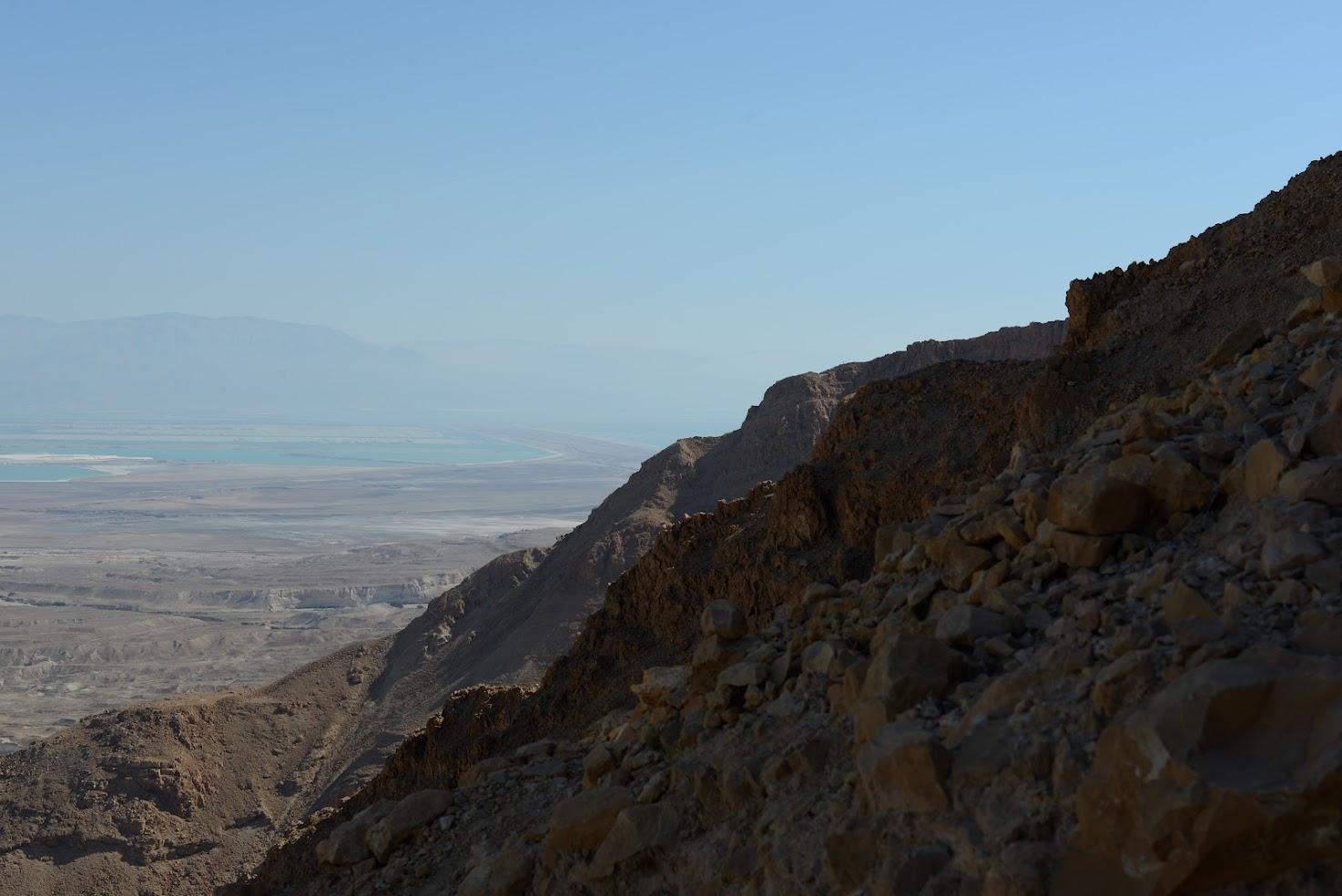Masada & the Dead Sea
Reaching the Top of Masada
Once you arrive at Masada’s eastern entrance, you can take a three-minute cable car ride to the summit. A round-trip ticket costs about $20. At the top, you’ll have the chance to explore the fascinating ancient ruins.
Alternatively, you can hike up via the “Snake Trail”—a steep and challenging climb that takes about an hour. Between May and September, climbing is only allowed before 8:00 AM due to extreme heat that can exceed 50°C.
The Snake Path climbs about 450 meters from the base to the summit of Masada. While the hike is challenging, you don’t need to be a professional—just in reasonably good shape. Reaching the top gave us a real sense of pride and accomplishment.
The Story of Masada
At the summit of Masada, Herod the Great built a magnificent three-tiered palace, giving the northeastern side of the mountain its iconic stepped profile. According to the historian Josephus, the Roman siege of Masada at the end of the First Jewish–Roman War ended in the mass suicide of 960 Sicarii rebels and their families. Only two women and five children survived.
This tragic event left behind a powerful philosophical question, echoed in the words of rebel leader Yair Ben Elazar: Is it better to die free or live enslaved?
Today, the story of Masada stands as a symbol of Jewish heroism and the enduring spirit of independence in Israel.
Masada Night Show
On the western side of Masada—accessible via Road 3199 from the city of Arad—you’ll find the Roman ramp and a spectacular night light show. Held only on Tuesdays and Thursdays from March to December (due to cold desert nights), the show brings to life the dramatic final days of the Jewish rebels as they faced the Roman army.
The performance is suitable for young children, especially Hebrew speakers. If you’re an English-speaking visitor over the age of 10, we suggest skipping it, as the experience may feel less engaging.
You can join a guided day tour to hear the captivating story of Masada brought to life—or opt for the famous sunrise tour, where the majestic Judean Desert reveals its beauty in the early morning light.
Masada sits near the western shores of the Dead Sea
The Dead Sea is not only the lowest point on Earth, but also world-famous for its healing waters—so rich in minerals that you float effortlessly. Its black mud, packed with 26 unique minerals, is bottled and sold worldwide for skincare.
Thanks to its location over 400 meters below sea level, the area is ideal for people with psoriasis, offering extended sun exposure with reduced risk of sunburn, thanks to the mineral haze that filters harmful UVA rays.
In biblical times, it served as a place of refuge for King David, and later became one of the world’s first health resorts under King Herod the Great. Throughout history, the Dead Sea provided valuable resources—from asphalt used in Egyptian mummification, to potash for agricultural fertilizers, and even the prized biblical persimmon used in perfumes and oils.
It became a leading export of the Judean kingdom. Just like today, people in antiquity used Dead Sea salt and minerals to create cosmetics and herbal sachets, prized for their healing and beauty-enhancing properties.







